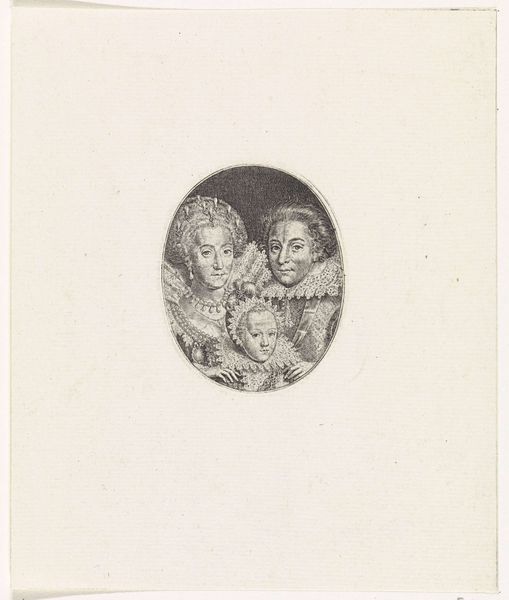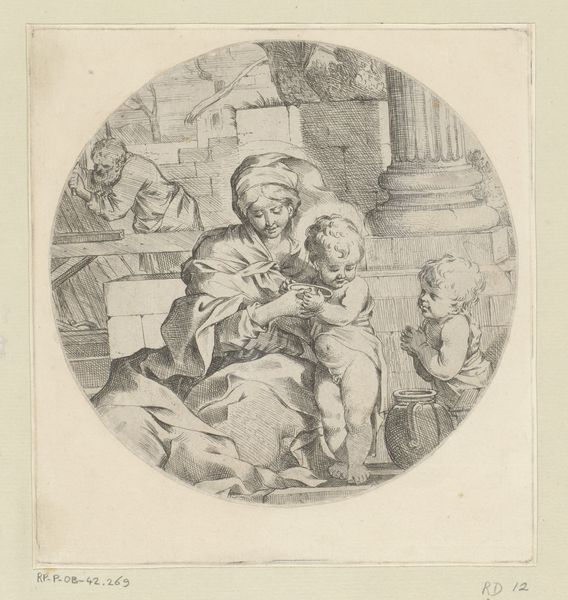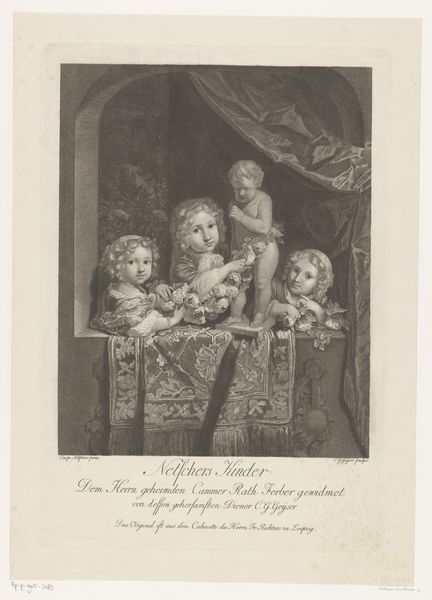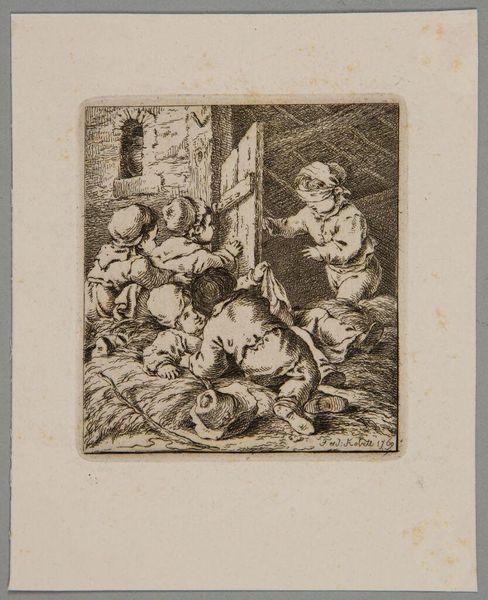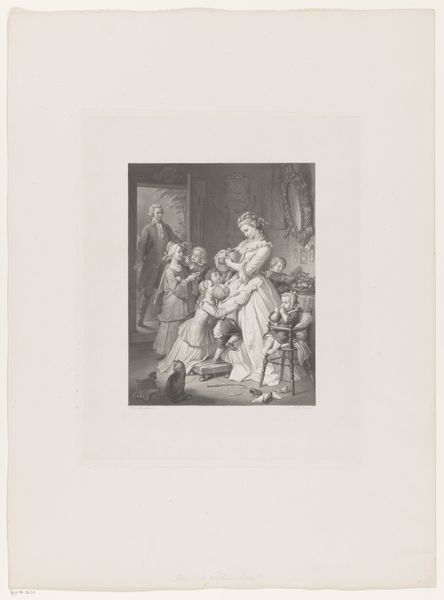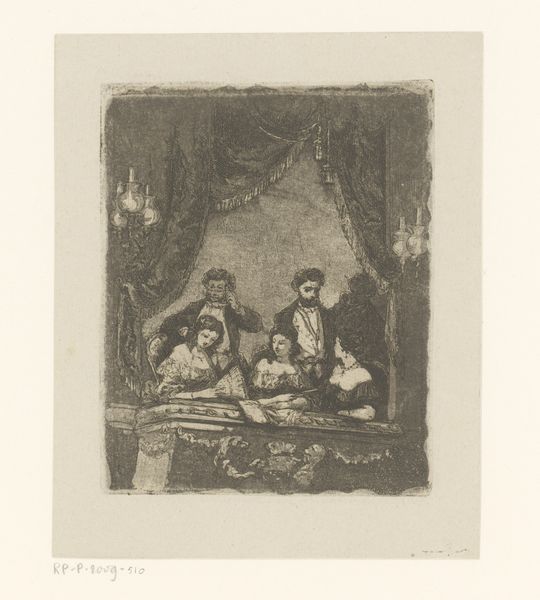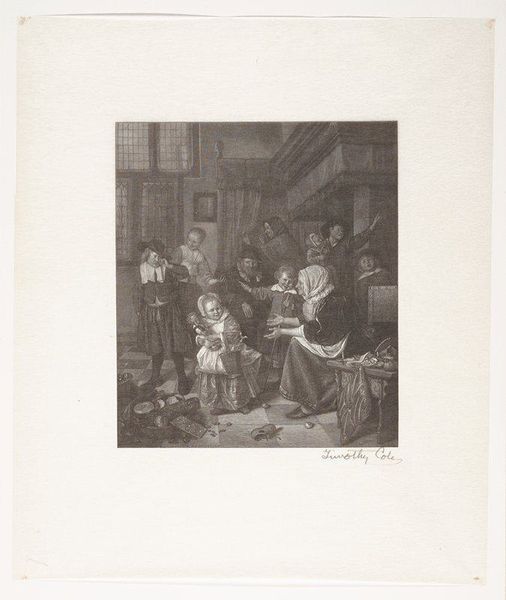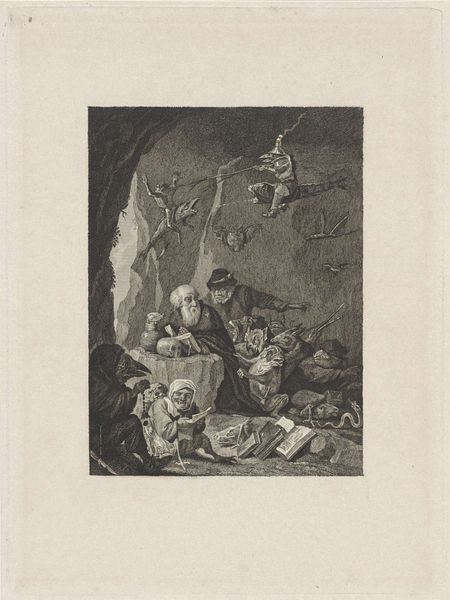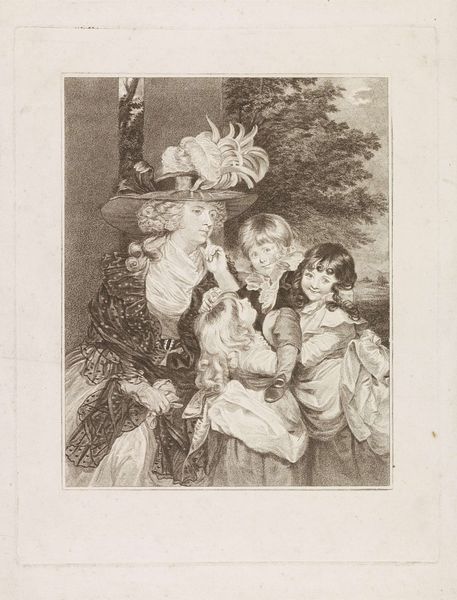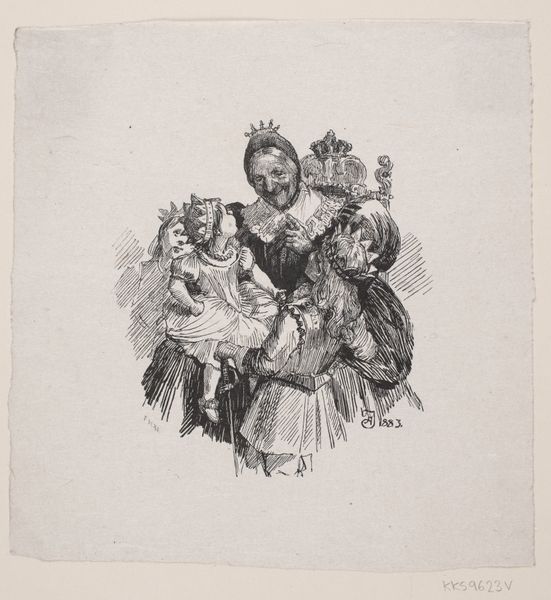
print, engraving
#
portrait
# print
#
old engraving style
#
genre-painting
#
history-painting
#
engraving
#
realism
Dimensions: height 163 mm, width 120 mm
Copyright: Rijks Museum: Open Domain
Curator: Here we have “Four Children with a Dog and a Cat,” a print created between 1826 and 1886, now residing here at the Rijksmuseum. Editor: Wow, it's like a sepia dream. The expressions of the children! They're poised, almost as if they're aware they're becoming part of something permanent, frozen in time. Is that how kids even looked back then? Curator: This piece, attributed to Dirk Jurriaan Sluyter, provides a fascinating glimpse into the aesthetics and values projected onto children during its time. Notice the details. The dog, a symbol of fidelity, sits quite comfortably alongside a cat, an animal associated with intuition and domesticity. The artist uses them, in a conventional 19th century understanding, to reflect aspects of the children’s characters or maybe hint at their future roles. Editor: Characters! They remind me of little porcelain dolls lined up on a shelf, but with a hint of mischief. It's a curious composition. Curator: Indeed, the medium, an engraving, lends itself well to a formal portrayal of its subjects. The scene unfolds as if viewed through a proscenium arch, staging the figures within a controlled environment that blurs the line between genre and history painting. Observe how clothing and textures meticulously define social class and respectability. This image subtly reinforced societal structures. Editor: You know, for all the detail, there's this undeniable aura of... something just out of reach. Like a memory fading at the edges. I like that. Makes it strangely… relatable. As though something profound rests just beyond my comprehension. Curator: And so the power of symbolism endures, inviting successive generations to decipher their messages and narratives through the looking glass. Editor: Right, it's not just seeing what's there, but feeling the echo of lives that once were, and trying to pick up what hasn't been said.
Comments
No comments
Be the first to comment and join the conversation on the ultimate creative platform.
